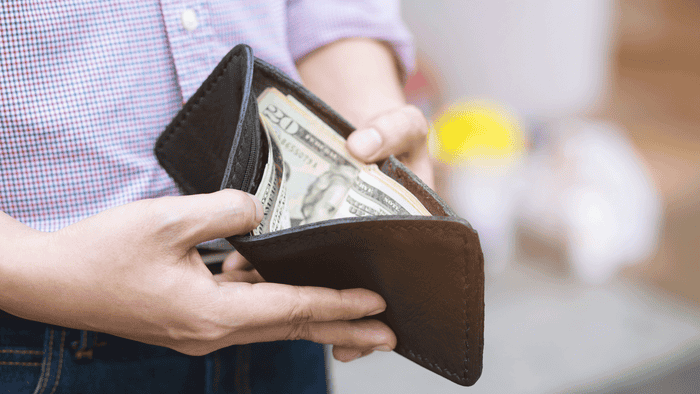
The first-round of stimulus checks have found their way into Americans' bank accounts, and while this would seem to be a good time for a social experiment to learn what crazy things people would do with free(ish) money, it turns out it's actually much more dull (and practical) when played out in real-life.
Early data shows that a lot of the money is going to food. That info was compiled by digital bank Current, who themselves were using statistics from people who've gotten their money in the past five days (the rest of us will have to wait longer, learn more here).
Current says that 16 percent of the money has gone towards food, which specifically includes takeout and delivery from restaurants. An additional nine percent has been spent on groceries, and 10 percent has been used for gas.
“Clearly food is an issue, people are struggling,” said Current CEO Stuart Sopp to CNBC. “They’re just trying to survive, and I think that’s what the stimulus was all about.”
As part of the overall $2.2 trillion package, a one-time cash transfer of up to $1,200 was approved for individuals (double that for married couples) as they deal with the terrible economic consequences of the pandemic. While some reps are proposing making more payments, this is where we're at for now. If you wanted more you should've founded your own airline.
The Treasury Department said that tens of millions of citizens will get their payments by Wednesday thanks to direct deposit.
Current's data was compiled because they were one of a few financial technology start-ups that were able to get money to their customers sooner than traditional banks. Of the nearly 17,000 members' accounts they had deposited payments into, 45 percent of the money had already been spent.
On top of the food/gas expenses covered above, 14 percent of those spent their money transferring to others on the platform. That's either a nice gesture, a pay back of loans, or some combination of both.
In addition to Currency's data, Fortune and SurveyMonkey put together a poll of 5,755 adults whom they questioned over the previous five days (from April 10-14).
In contrast with how people normally splurge upon getting income tax returns, Fortune found that people are making dull responsible decisions. At least that's how they answered the survey.
Broken down, it's like this: 47 percent are using the money for non-housing bills, 33 percent are buying groceries, 30 percent will purchase "household essentials," 29 percent are using it to pay for housing, meaning either rent or mortgage, and only two percent indicated they'd spend it on travel.
Obviously some people are planning to use it for more than one thing.
Fortune adds that millennials and Gen Xers are more likely to buy groceries and pay bills than their baby boomer peers.
In fact, 41 percent of millennials say they'll spend their money on rent or mortgage. But only 16 percent of baby boomers indicated the same intent.
That may be due to where they're at in life, but also may be due to the practice that a lot of them had when entering the workforce on or around the 2008 financial crisis.
